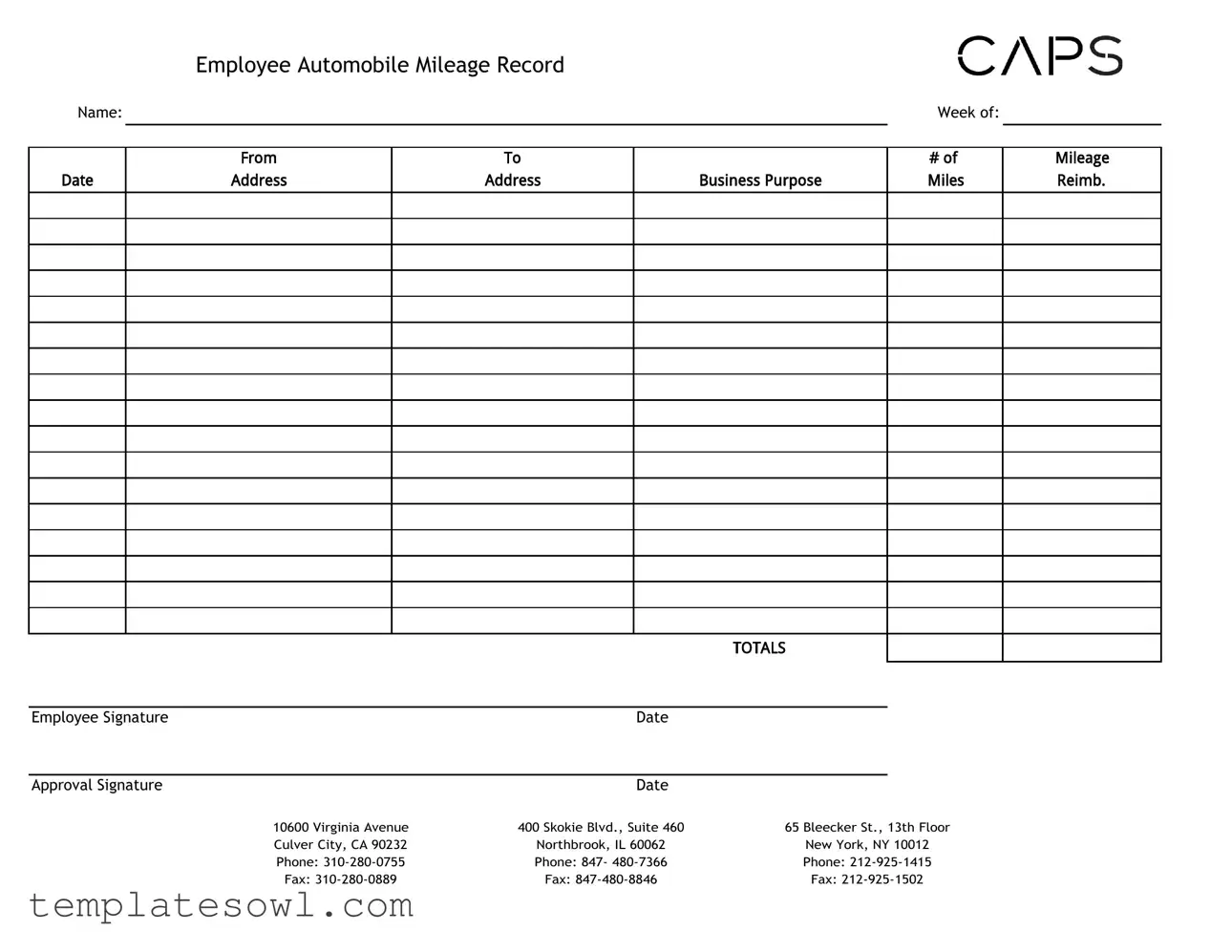What is the purpose of the Caps form?
The Caps form, specifically the Employee Automobile Mileage Record, serves to document the miles employees drive for business purposes. It is an essential tool for tracking expenses related to travel, ensuring that employees are reimbursed accurately for their work-related driving.
How should I fill out the Caps form?
To complete the Caps form, begin by writing your name and the week for which you are reporting mileage at the top of the document. Next, record each trip's details, including the starting address, destination address, and the total miles driven. Be sure to sign and date the form at the bottom. This information will help facilitate the reimbursement process.
Who needs to approve the Caps form?
The Caps form requires an approval signature from a designated authority within your organization. Typically, this might be your supervisor or a manager responsible for overseeing travel expenses. Their approval ensures that the details provided are verified and in accordance with company policy.
Where do I submit the completed Caps form?
After filling out and obtaining the appropriate signatures, submit the completed form to your accounting or human resources department. Depending on your organization’s procedures, this might be done electronically or as a physical document.
What information do I need to provide for business travel?
When documenting business travel, include the addresses of your starting location and your destination, as well as the total miles traveled for each trip. You should also note the purpose of the trip, as this context can be helpful for reimbursement reviews and record-keeping.
What should I do if I forgot to record my mileage on the Caps form?
If you forget to record mileage, it is important to reconstruct your travel as soon as possible. Gather any evidence you can, such as emails or calendar entries, to confirm your trips. You can then fill out the Caps form with this information. Depending on company policies, you may need to explain the oversight during the approval process.

